Notes: Heap Bridge Goods station was located on the ¾-mile Heap Bridge branch of the Lancashire & Yorkshire Railway (LYR). The branch connected to the Bury Knowsley Street – Castleton line (opened throughout on 1 May 1848) at Heap Bridge Junction which was a little under 1¼ miles east of Bury. The branch was authorised on 24 June 1871 and opened between Heap Bridge Junction and the Heap Bridge Goods station on 9 September 1874. The line was built to serve paper mills that were clustered around the River Irwell at Heap Bridge. There was a direct connection between the goods station and the Heap Bridge Paper Company mill.
When the line opened its terminus was at the goods station but on 21 July 1882 the branch was extended north by a further 700 yards (making it ¾-mile) so that it could directly serve the Bridge Hall Mills.
The goods station was located on the south side of Bury New Road on the north side of the branch line; the road connected its namesake to Heywood. The station was provided with a robust, sandstone goods shed beneath a pitched slate roof. Only one line ran into the shed. There were four sidings and a small yard.
A signal box, Heap Bridge Goods, was opened in 1877 just west of the goods station on the east side of Heap Brow. It was a Saxby & Farmer Type 9 design consisting of a brick base with timber upper cabin.
After 9 August 1894 (when a siding agreement was made with Yates Duxbury) a direct connection was made from the goods station to the Heap Bridge mill site on the south side of Bury New Road.
The station handled a variety of goods. Although industrial in the immediate vicinity the surrounding area was predominantly rural so there would have been seed and agricultural machine deliveries inward and agricultural produce outward. Private wagon traffic for the local mills would also have passed through the station.
The RCH 1904 Handbook of Stations listed Heap Bridge Goods station as being able to handle public goods and as having a 1 ton 5 cwt lifting crane. Private sidings for Duxbury’s (Yates Duxbury& Sons) and for Wrigley’s were listed.
The mills at Heap Bridge had their own locomotives and they were given running rights on the LYR Heap Bridge branch so that they could move between the various mill sites.
On 1 January 1922 the LYR was absorbed into the London & North Western Railway and a year later that company became part of the London Midland & Scottish Railway (LMS). Aerial photographs from 1926 shows 15 wagons present at the station. They included both open wagons and box vans. Some of the open wagons were sheeted over which suggests that they contained goods that needed to be kept dry. Clearly the station was handling a variety of mixed traffic at this time.
Heap Bridge Goods signal box was closed sometime between 1930 and 1935. It was replaced with a ground frame.
At nationalisation on 1 January 1948 Heap Bridge Goods became part of British Railways (BR) London Midland Region (LMR). The 1956 Handbook of Stations listed the station as being able to handle public goods but no mention was made of a lifting crane. There were private sidings for Yates, Duxbury & Son listed as Duxbury’s (Garfield) siding and Duxbury’s (Greendip) siding.
By the late 1950s lorry competition had started to affect the railways with regard to smaller wagon load freight and that was having an impact on the profitability of goods services. The Transport Act of 1962 lifted the ‘Common Carrier Obligation’ from the railway. This obligation had meant that any type of goods offered had to be carried and at an agreed rate. Many loads were small and hopelessly uneconomic. The Reshaping of British Railways (the ‘Beeching Report’) of 1963 went further and it recommended that only train-load consignments of goods should be carried and that they should operate from large centralised facilities. The report recommended that goods stations such as Heap Bridge should close.
On 28 July 1962 Heap Bridge was visited by a passenger train - the ‘Salford Hundred Rail Tour’ that commenced its journey at Manchester Piccadilly. The train spent half an hour at Heap Bridge giving enthusiasts the opportunity to explore the station.
Heap Bridge closed to public goods services on 16 October 1967.
Private traffic for the mills continued until 19 September 1973. On that day the last remaining wagons were removed from the branch and the points that connected it to the main line at Heap Bridge Junction were clipped out of use; they had been controlled by a ground frame after Heap Bridge Junction signal box had burned down in January 1971.
The branch officially closed on 5 December 1973 and was lifted shortly after.
The good shed at Heap Bridge survived closure and in 2017 it formed part of a retail tile centre.
Route map by Alan Young. Signal box information from Tony Graham.
Sources:
- A Regional History of the Railways of Great Britain - Volume 10 The North West - Geoffrey O Holt, David & Charles 1986.
- Forgotten Railways - North West England - John Marshall, David & Charles 1981.
- Lost Stations of North West England - Paul Wright, Silverlink Publishing 2011.
- The Lancashire & Rorkshire Railway, Volume 1 - John Marshall, David & Charles 1969.
- The Lancashire & Yorkshire Railway Volume 2 - John Marshall, David & Charles 1970.
Click here to see the other stations between Bolton and Castleton:
Darcy Lever, Bradley Fold, Radcliffe Black Lane,
Bury Knowsley Street, Broadfield, Heywood (2nd) and Heywood (1st)
|

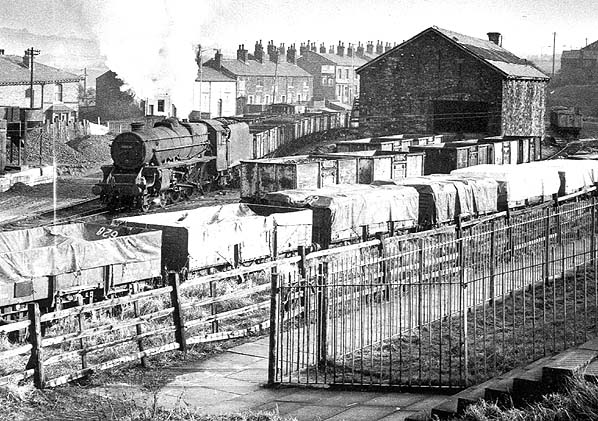
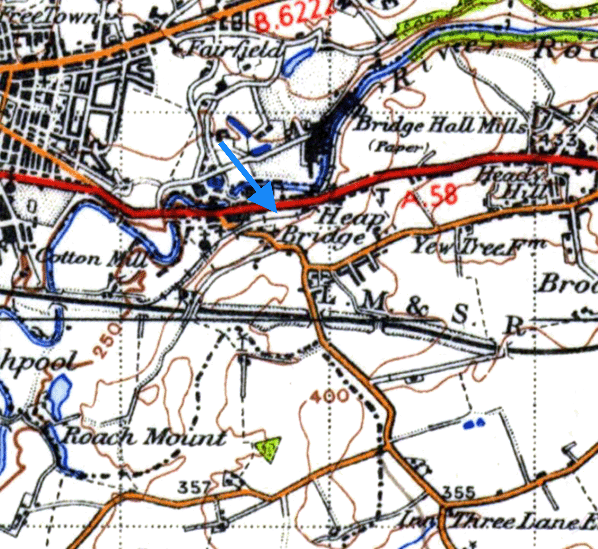
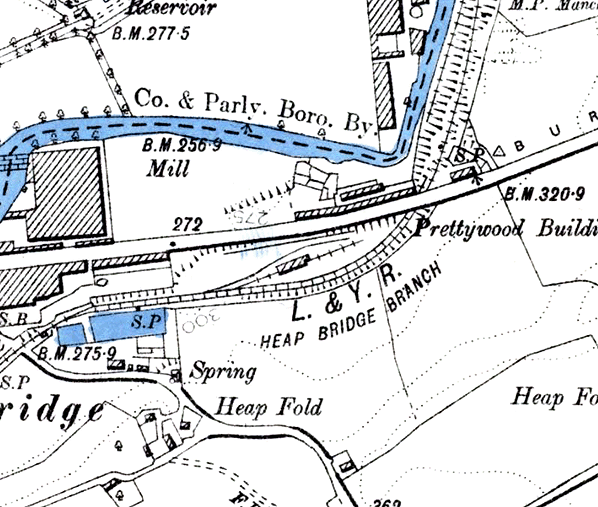
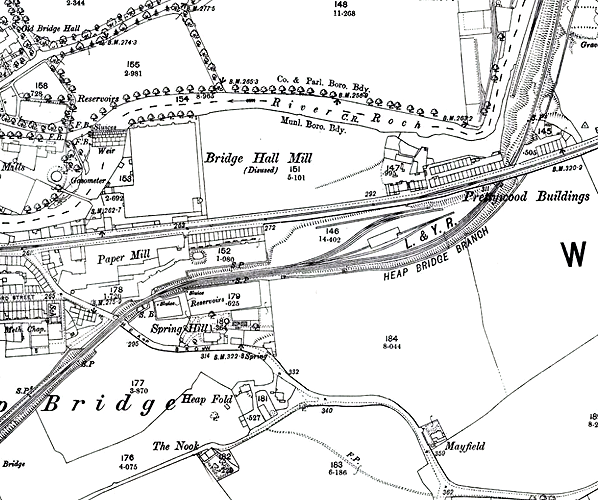
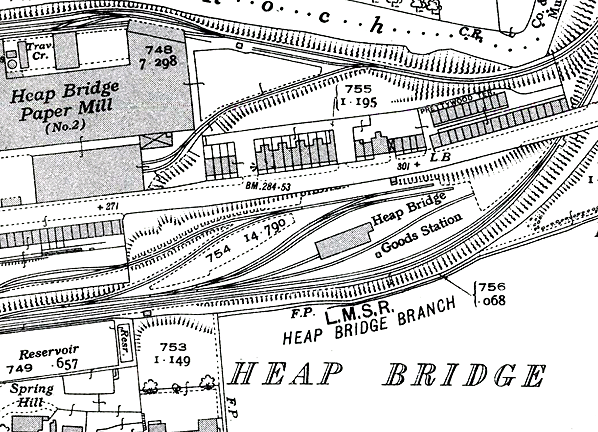
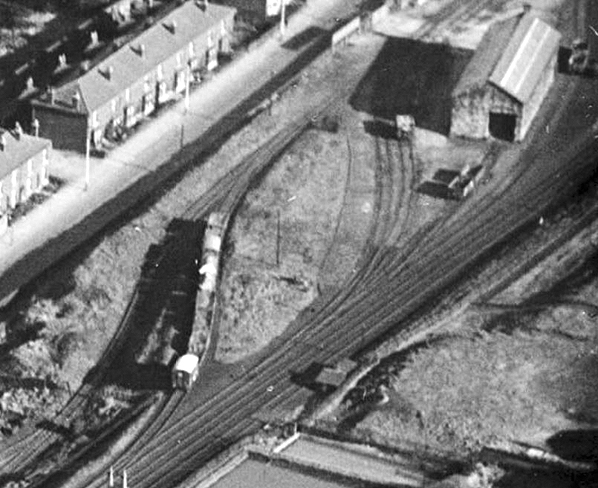
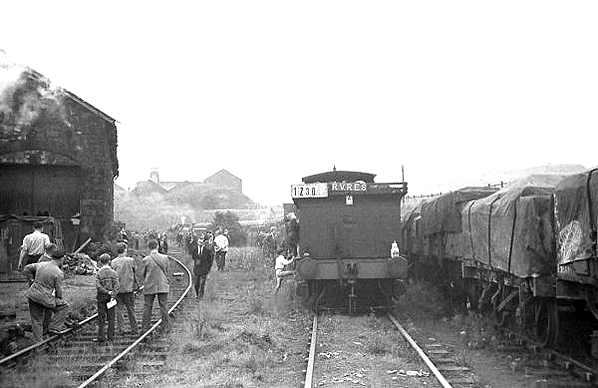
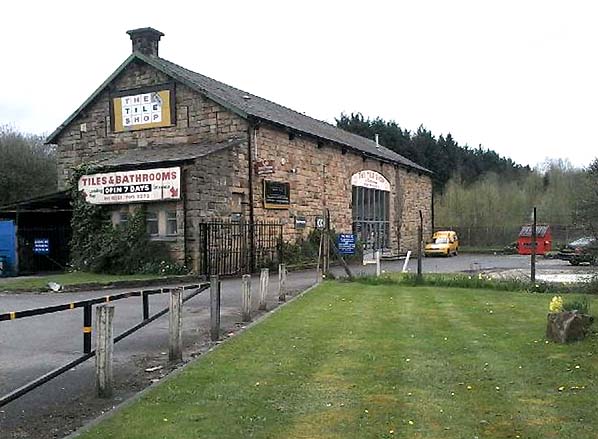
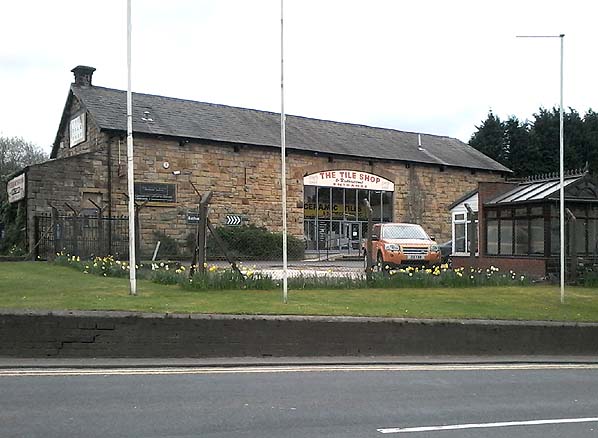
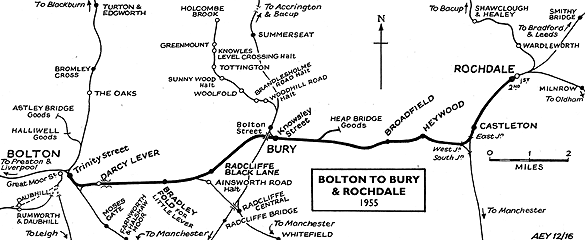

 Home Page
Home Page